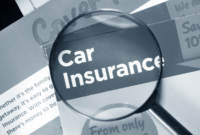Too expensive for auto insurance? You’re not by yourself. A lot of people, particularly those with low incomes or high-risk characteristics, find it difficult to afford auto insurance. However, there are steps you may do to lower the cost of auto insurance.
We’ll go over the high-risk characteristics that might result in higher rates in this article, as well as the financial concerns that may make it difficult to purchase auto insurance. We’ll also offer advice on how to look for reasonably priced insurance and select the appropriate coverage levels. Lastly, we’ll talk about other ways that people who can’t afford auto insurance can get around.
monetary considerations
Many other financial factors affect how affordable auto insurance is, but the main ones are debt, spending, and income. Navigating the complexity of auto insurance prices requires an understanding of how these factors interact.
It may be difficult for people with lesser earnings to get reasonably priced auto insurance. Low income may be interpreted as a sign of increased risk because insurance rates are frequently determined by taking into account risk variables. Furthermore, those with low incomes can put housing, food, and medical costs ahead of auto insurance.
You will discover in this article that being a property-casualty insurer is a highly beneficial career option.
Impact of Income
Lower income individuals may qualify for government assistance programs or discounts from insurance companies designed to make car insurance more accessible.
Part-time employment or seasonal work can result in fluctuating income, making it difficult to budget for consistent insurance payments.
Impact of Expenses
High housing costs, transportation expenses, and childcare costs can leave little room in the budget for car insurance premiums.
Unexpected expenses, such as medical bills or car repairs, can further strain financial resources and make it challenging to maintain car insurance coverage.
Impact of Debt
Outstanding debts, such as credit card balances or student loans, can reduce disposable income and make it harder to afford car insurance.
Individuals with poor credit scores may face higher insurance premiums due to being perceived as higher risk.
High-Risk Factors

Individuals with certain characteristics or behaviors are considered high-risk by insurance companies, leading to higher insurance premiums. These factors include age, driving history, and vehicle type.
Age, Can’t afford car insurance
Young drivers, typically under the age of 25, are statistically more likely to be involved in accidents due to inexperience and risk-taking behaviors. As a result, they face higher insurance premiums compared to older, more experienced drivers.
Browse the multiple elements of urgent care visit cost without insurance near me to gain a more broad understanding.
Driving History
A poor driving history, including traffic violations, accidents, or DUIs, significantly increases insurance premiums. Insurance companies view these incidents as indicators of a higher likelihood of future accidents, justifying higher premiums to offset the increased risk.
Vehicle Type
Certain types of vehicles, such as sports cars, luxury vehicles, and high-performance vehicles, are associated with higher insurance premiums. These vehicles are often more expensive to repair or replace, and their drivers are perceived as being more likely to engage in risky driving behaviors.
Strategies for Mitigating High-Risk Factors
While some high-risk factors, such as age, cannot be changed, there are strategies to mitigate others and potentially lower insurance premiums:
Maintain a clean driving record: Avoid traffic violations and accidents to demonstrate responsible driving habits.
Take defensive driving courses: These courses can help improve driving skills and reduce the likelihood of accidents.
Consider a usage-based insurance policy: This type of policy tracks driving behavior and rewards safe drivers with lower premiums.
Choose a lower-risk vehicle: Opting for a less expensive, less powerful vehicle can reduce insurance costs.
Shop around for insurance quotes: Compare quotes from multiple insurance companies to find the best rates for your individual risk profile.
Insurance Coverage Options
Car insurance policies provide varying levels of coverage to protect drivers from financial losses resulting from accidents or other covered events. Understanding the different types of coverage available and the minimum requirements in your state is crucial for making informed decisions about your insurance plan.
The coverage options typically include:
Liability Coverage
Bodily Injury Liability: Covers expenses related to injuries or death caused to others in an accident you are at fault for.
Property Damage Liability: Covers damages to other people’s property, such as vehicles or structures, caused by your accident.
Collision Coverage
Pays for repairs or replacement of your own vehicle if it is damaged in an accident, regardless of fault.
Comprehensive Coverage
Provides coverage for damages to your vehicle caused by events other than collisions, such as theft, vandalism, fire, or natural disasters.
Uninsured/Underinsured Motorist Coverage
Protects you from financial losses if you are involved in an accident with a driver who does not have insurance or has insufficient coverage.
Medical Payments Coverage
Covers medical expenses for you and your passengers, regardless of fault.
Explore the different advantages of car insurance lawyer that can change the way you view this issue.
Minimum Coverage Requirements
Each state has minimum insurance coverage requirements that drivers must meet to operate a vehicle legally. These requirements vary from state to state but typically include liability coverage and, in some cases, uninsured/underinsured motorist coverage.
Discover more by delving into car insurance rockford il further.
Choosing the Right Coverage Levels
The appropriate coverage levels for you depend on your individual needs and budget. Consider factors such as the value of your vehicle, your driving history, and your financial situation. It’s recommended to consult with an insurance agent to determine the best coverage options for your circumstances.
Obtain recommendations related to car insurance quotes buffalo ny that can assist you today.
Shopping for Affordable Insurance: Can’t Afford Car Insurance

Comparing quotes from multiple insurance companies is crucial to find the best coverage at the most affordable price. Take the time to gather quotes from different providers, considering factors like your driving history, vehicle type, and coverage needs.
Negotiating Lower Premiums
Negotiating with insurance providers can help you secure lower premiums. Explain your financial situation and ask for discounts or payment plans that work for you. Inquire about any loyalty programs or multi-policy discounts that could reduce your costs.
Bundling Insurance Policies
Bundling your auto insurance with other policies, such as home or renters insurance, can often lead to significant savings. Insurance companies typically offer discounts for customers who bundle multiple policies, so consider this option to save money on your overall insurance expenses.
Alternative Transportation Options
Individuals who cannot afford car insurance have several alternative transportation options available to them. These options include public transportation, ride-sharing, and carpooling. Each option has its own benefits and drawbacks, and the best choice for an individual will depend on their specific circumstances.
Public Transportation
Public transportation is a good option for people who live in urban areas with well-developed public transportation systems. It is typically more affordable than owning and operating a car, and it can be more convenient than driving in congested areas.
Benefits: Affordable, convenient, environmentally friendly.
Drawbacks: Can be slow and unreliable, may not be available in all areas.
Ride-Sharing
Ride-sharing is a good option for people who need to travel occasionally but do not want to own and operate a car. Ride-sharing services like Uber and Lyft allow users to request a ride from a driver who is already on the road. This can be a more affordable option than taking a taxi, and it is often more convenient than public transportation.
Benefits: Affordable, convenient, available in most areas.
Drawbacks: Can be more expensive than public transportation, may not be available in all areas.
Carpooling
Carpooling is a good option for people who have a regular commute to work or school. Carpooling involves sharing a ride with other people who are traveling to the same destination. This can be a more affordable option than driving alone, and it can also help to reduce traffic congestion.
Benefits: Affordable, reduces traffic congestion.
Drawbacks: May not be convenient for everyone, may require coordination with other people.
Query Resolution
What are some financial considerations that can make it difficult to afford car insurance?
Some financial considerations that can make it difficult to afford car insurance include low income, high expenses, and debt.
What are some high-risk factors that can lead to higher insurance premiums?
Some high-risk factors that can lead to higher insurance premiums include young age, poor driving history, and driving a high-performance vehicle.
What are some tips for shopping for affordable car insurance?
Some tips for shopping for affordable car insurance include comparing quotes from multiple insurance companies, negotiating lower premiums with insurance providers, and bundling insurance policies.
What are some alternative transportation options for individuals who cannot afford car insurance?
Some alternative transportation options for individuals who cannot afford car insurance include public transportation, ride-sharing, and carpooling.




